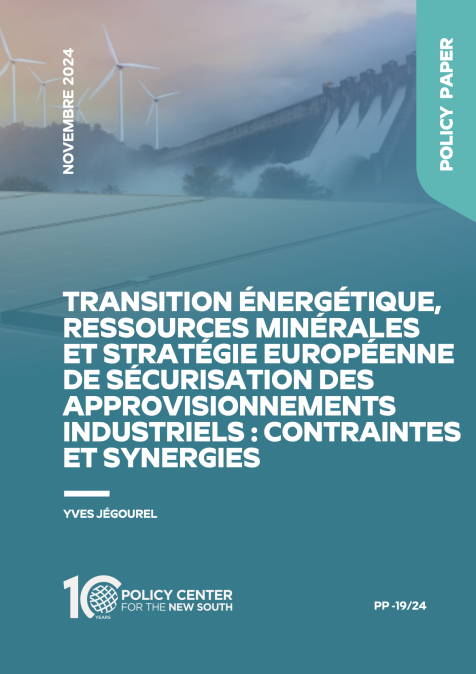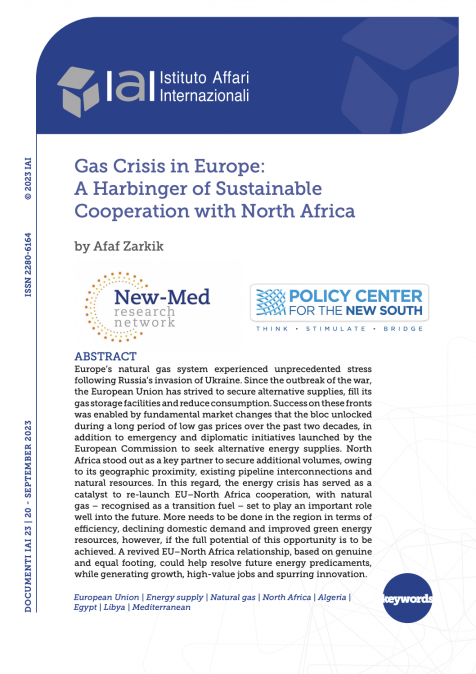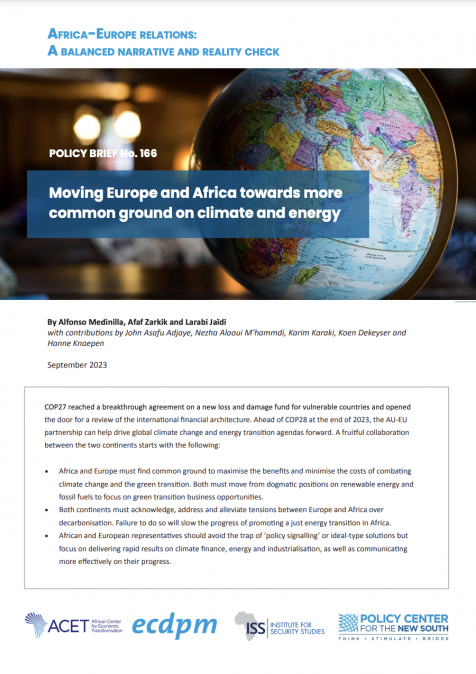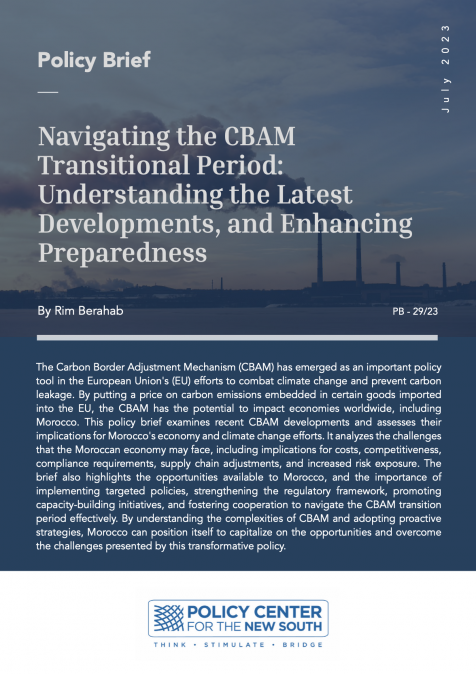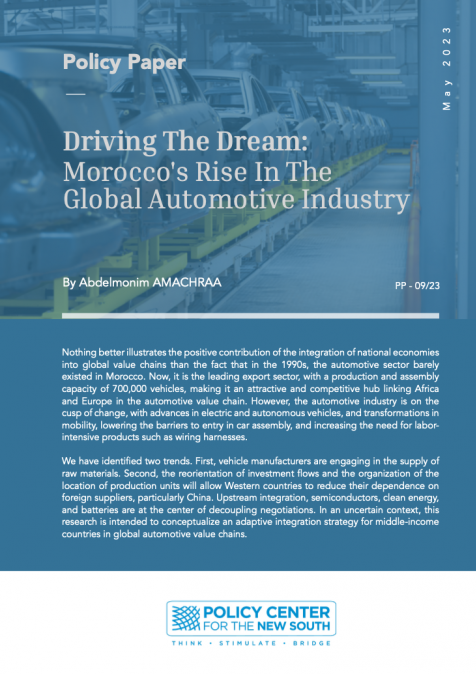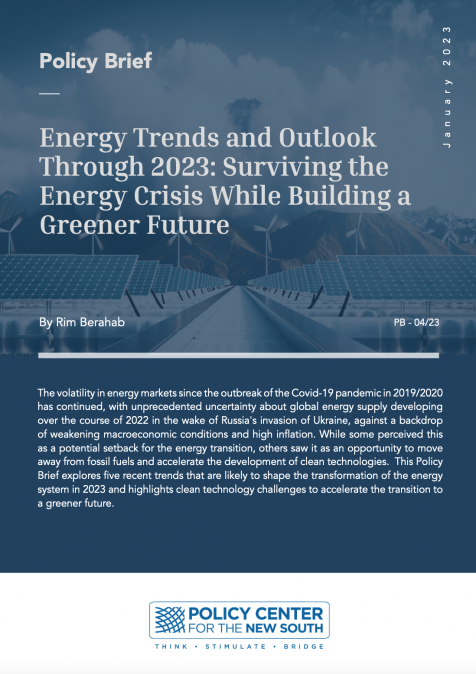Publications /
Opinion
Garbage, at times, stinks of gold. E-waste, toxic, or nuclear trash, is making the Mafia wealthy, allowing crime syndicates to perfume their bank accounts, or fill their safes with cash. Waste management is extremely lucrative. The EU’s trash business has an estimated turnover of over 100 billion yearly. The largest 25 European waste management firms employ 130,000 people. Now, multiply on the global scale—much of it illegal, and therefore often in cash. Welcome to the Godfather. It is well known to movie fans, who admired Marlon Brando as Don Vito Corleone in “The Godfather,” that Southern Italian Mafia groups like Ndrangheta , Camorra, Cosa Nostra, have been for decades cashing in on a variety of activities. Brutal and powerful, from Rome to New York, London, Rio and beyond, these mafia groups cash in on construction sites, protection scheme’s, kidnapping, drug deals, boxing promoters, unions, film production, and even control part of the trash hauling business in Manhattan. One of my friends, managing director of a famous hotel near Madison Avenue, told me about one of his recent meetings with a representative of daily trash haulers based in Brooklyn. The mafia had raised its price by 25 percent and made it clear to the hotel manager how they would react to a refusal: “Until you agree we will empty a full garbage truck each day in front of your hotel lobby. Your guest(s) will enjoy the smell.”
“I’M GONNA MAKE HIM AN OFFER HE CAN’T REFUSE”
The hotelier paid and he also gave in when another crime syndicate, owning almost all important laundry firms in New York City, asked for a substantial higher fee and the hiring of two kids of the Mafia bosses’ family, dreaming about a career in the hotel business. Since Vito Corleone, the Godfather, promised, “I’m gonna make him an offer he can’t refuse,” the message does not need an explanation anymore. Under highways or bridges in New York, Chicago or LA, enemies of the mafia, who dare to resist forever, find a final resting place, buried, under cement, provided by a mafia building branch.
“Waste trade,” Greenpeace – an environmental NGO - wrote in a 2010 report, “offers many opportunities for illegal and quasi-legal activity.” In fact, as added in the Greenpeace report, “waste hauling, transport and disposal are considered to be among the major sources of income for criminal organizations who either directly or indirectly control these activities.”
The recycling of electronic waste, as computers, TV sets, and cell phones, has also turned into an incredible profitable business, since most countries of the world did not introduce legislation to control e-waste. Custom officials in poorer countries of Africa (and Asia) are unable to control thousands of containers unloaded almost each day, legalized by European or American documents, often forged. Almost all the e-waste or barrels filled with toxic materials are accepted in these desperate nations, not many questions asked since cash allows the transit to the final destination, an abandoned beach, a forgotten stretch of the coast, pristine water turning into a dangerous radioactive ocean, and the innocence of nature forever destroyed. Hundreds of containers filled with garbage , most probably radioactive as well, were used to fortify the port of Eel Ma’aan , located 30 km north of Somalia’s Mogadishu. Roads were paved with toxic waste dumped by European firms, whose criminal conspiracies would fit perfectly into a John Grisham or Mario Puzzo bestseller. One of the Mafia turncoats revealed how, in 1992, the Mafia transported yet another 1,000 barrels to Somalia, the trash containing elements of uranium oxide, cesium and strontium, hidden in 25-meter long containers. Supposedly, the Italian secret service, assisted by a CIA contact, facilitated the acceptance of the cargo. The payment: 75 cases of Kalashnikovs, 25 cases ammunition, and 30 Uzi machine guns. The weapons, delivered in the Ukraine, were transported by the “Jadran Express”, registered in Malte, to Trieste and, by truck, to the “Mohamuud Harbi,” a Somalian fishing vessel, anchored in La Spezia. The toxic and radioactive waste was loaded onto another fishing boat, the “Osman Raghe.” Both vessels departed at the same time. Once arrived, the weapons were delivered to the headquarters of Ali Mahdi, the toxic waste was buried in remote areas, part of it under the Garoe-Bosaso road, and some was dumped near the Webi Jubba River, near the border with Kenya. The payments for the dumping locations, 1.2 billion lire, were, allegedly, in cash, provided, as one Ndrangheta traitor declared, through accounts at the Credit Suisse in Lugano, while other transactions were made at the Hellenic Bank of Sarajevo.
In 2009, the United Nations Office on Drug and Crime (UNODC) published a report, “Transnational trafficking in West Africa,” in which it identifies trafficking in persons, drugs, oil, cigarettes, counterfeit medicines, toxic waste and electronic waste (“e-waste”) as posing a serious threat to security and development in West Africa. “Organized crime is plundering West Africa-destroying government, the environment, human rights and health,” warned the UNODC executive director, “a powerful minority, all the way to the top, is profiting from crime in West Africa, at the expense of the many,” warning that, left unchecked “democracy and development will falter, while crime and corruption will flourish.”
Between 1994 and 1995, revealed Greenpeace, the Italian businessman Giorgio Comerio, (also accused later of participating in the sinking of a freighter loaded with toxic waste) contacted at least 16 African governments, including the Somali warlord Ali Mahdi, seeking authorization to import radioactive waste to be disposed in the sub seabed of their exclusive economic zone. The method Comerio requested was a simplified version of a project studied by the Nuclear Energy Agency (NEA), where ships, equipped with drilling gear and suppository shaped free fall penetrators (containers which would penetrate the seabed like amour piercing bullets), would shoot the high level waste under the seabed. The NEA project was abandoned in 1987, six years later the London Convention, dealing with the disposal of waste at sea, also banned the sub-seabed project of the Italian waste and alleged arms dealer.
15,000 TONS OF COLOUR TELEVISION
In 1991, Swiss-Italian firms signed a contract allowing them to build a 10 million ton storage facility for hazardous waste in Somalia, accepting the delivery of 500,000 tons yearly. The waste facility was never built. In 1992, the Somali Minister of Health & Social Affairs, Nur Elmi, a close ally of Ali Mahdi, who in those days controlled Mogadishu, signed, in Rome, an agreement authorizing the Italian company “Interservice Srl” to dump 2 million tons of “ferrous scrap metal” in Somalia, a scheme worth 76 million dollars. International environmental organizations sounded the alarm that “Italian Mafia companies” were targeting Somalia with their toxic waste deliveries, which allegedly were organized with the help of the Italian secret service and some deliveries were even financed by ENEA, Italy’s state energy research agency. If trash export scandals were just isolated incidents, argues, rightly, Greenpeace, perhaps it would not matter. However, some 3 million tons of hazardous and toxic waste go to sea every year, revealed the environmental group in 2010, three million tons annually in need of a dumping site somewhere on the globe. Any virgin island, picturesque mountain or crystal clear river would be abused by criminal conspirators, based in a little village in Calabria a Pizzeria in Wuppertal, Germany; an office in a skyscraper on Fifth Avenue, New York City; or a prestigious villa in Monte Carlo. In 2005, more than 15,000 tons of color television sets were exported from the EU to African countries and an estimated 500 containers of used electronic equipment enter the Nigerian port of Lagos each month, including about 400,000 used computers. The majority of the material is unusable and not economically repairable or resalable. In other words, their shipment is illegal. “Much of the imported equipment often ends up in landfills,” reported Greenpeace, “where toxins pollute the groundwater and create unhealthy conditions.”
The total value of all raw materials present in e-waste is estimated at 55 billion Euros in 2016, which is more than the 2016 Gross Domestic Product of most nations in the world. In other words, e- waste offers huge economic opportunities for legal e-waste management, but also for the mafia, other criminal organizations or crooked merchants of dirt worldwide. Two, three decades ago, crime syndicates were already engaged in illegal shipments of toxic and nuclear trash, in particular, to Africa. 61 documents declassified last year by the Italian intelligence service SISMI seemed to prove that an Italian citizen, Georgio Comerio , allegedly, had dumped, in 1995, 200 000 barrels of North Korean nuclear waste into the sea near Taiwan. He never faced charges in court. Another case, the “Khian Sea,” ship symbolizes the unbelievable criminal energy of waste exporters and the money involved. In 1986, the ship loaded 14,000 tons of toxic incinerator ash from Philadelphia, USA, ashes apparently containing enough arsenic, cadmium, lead, mercury, dioxin and other toxins to be considered hazardous waste. The city of Philadelphia produced about 180,000 tons of this ash each year. At the end, American landfills were reluctant to accept the poisonous trash. A deal was made to dispose the cargo on a Caribbean island instead—the tourism industry certainly would have rejoiced. The Bahamas, the first candidate to drown in toxic ashes, turned the ship away, as did (over the next 14 months) countries like the Dominican Republic, Honduras, Panama, Bermuda, Guinea Bissau and the Netherland Antilles. Finally, in 1987, the Haitian government issued a permit for the “fertilizer” import, and the “Khian Sea” crew dumped 4,000 tons of ash on a beach near the city of Gonaives. Alerted by Greenpeace, the government revoked the permit, but in the middle of the night, the ship had slipped away leaving the dangerous ashes behind. Since another 11,000 tons needed to be dumped, the captain directed his ship to Senegal, Morocco, Sri Lanka and Singapore, but no authority was willing to accept the poisonous load.
RESPIRATORY PROBLEMS, NAUSEA, DIZZINESS, VOMITING, BURNS, AND IRRITATIONS
As the freighter wandered around the oceans, the owners changed its name from “Khian Sea” to “Felica,” and then “Pelican” and its registration was transferred from Liberia to the Bahamas, and to Honduras, attempting to conceal the identity. Two years, three names, four continents and eleven countries later, somewhere between Singapore and Sri Lanka the ash disappeared. Apparently, it had been dumped into the sea, a crime the captain, years later, would admit to in court; the ash had been disposed in the Atlantic and Indian ocean. In 2006, the Probo Koala, a tanker sailing under the Panamanian flag, and chartered by one of the largest independent oil traders in the world, unloaded a toxic waste shipment in Abidjan, capital of the Ivory Coast. The waste, consisting of volatile hydrocarbons, supposedly was to be treated by an Ivorian waste handling firm, “Tommy Ltd,” which had been incorporated ten days before the arrival of the Probo Koala. The cargo was not recycled, but was dumped by trucks at eight different sites in the city. Suddenly symptoms showed up by those who came in contact with the waste -- respiratory problems, nausea, dizziness, vomiting, burns and irritations. There were 63,296 probable and 34,408 confirmed cases of exposure to the waste from the Probo Koala. In June 2010, a criminal case opened in Amsterdam against the London traders, Trafigura, who had chartered the vessel. The Ivorian government eventually reached a settlement - the company would pay 152 million pounds for the construction of a waste treatment plant. The owner of the local waste handler, Tommy Ltd, was sentenced to twenty years imprisonment and his shipping agent to five years. In 2009, shortly before trial hearings, both sides settled the case with the payment of 28 million pounds, the equivalent of 1,000 pounds for each claimant. The district court in Amsterdam convicted Trafigura in July 2010, requiring the company to pay 1 million euro for concealing the hazardousness of the Probo Koala wastes from the port authorities of Amsterdam. Trafigura had asked for the treatment of the waste to be priced at a rate of 900 euro per m3, whereas Trafigura expected its chemical trash to be treated in Abidjan for just 35 dollars per m3. The Ukrainain captain, Sergey Chertov, received a suspended five-month prison sentence. These examples are certainly not unique and limited to decades gone by. The temptations, and greed, is driving the criminal element in the trash business worldwide. No questions asked. Moreover, some nations in Africa and Asia, desperate for funds, are facilitating the illegal commerce. The business is growing and no solution is in sight. The laws do exist, but not the motivation to accept and realize the rules.
Current global waste levels, other than e-waste, are estimated at 1.3 billion tons a year. These figures are expected to increase to 2.2 billion tons per year by 2025 (waste generation in sub Saharan Africa is approximately 62 million tons per year). In 2014, the total trash generated in the EU by all economic activities and households amounted to 2,503 million tons. Among the garbage generated in the EU, some 95 million tons were classified as hazardous waste, posing an elevated risk to human health and to the environment if not managed and disposed safely. The amounts of e-waste reached dramatic volumes in 2016, with a staggering 44.7 million metric tons. This is an equivalent of almost 4,500 Eiffel towers, as reported by the Global E-waste Monitor 2017. The amount of e-waste is expected to increase to 52 million metric tons, because by 2017 close to half of the world’s population used the internet and most people in the world have access to mobile networks. A growing global middle class is able to spend more on electronic and electrical equipment, consequently changing equipment frequently and generating more e-waste. The troubling truth is that of the 44.7 metric tons of e-waste, only 20 percent were recycled through appropriate channels. The missing 80 percent?
“The fate of a large majority of the e-waste (34.1 Mt) is simply unknown,” confirmed the Global E-waste Monitor, “in countries where there is no national e-waste legislation in place e-waste is likely treated as general waste or exported. There is the high risk that the pollutants are not taken care of properly, or they are taken care of by an informal sector and recycled without properly protecting the workers, while emitting the toxins contained in e- waste.”
More than two decades ago, a mafia member named Francesco Fonti (who tried to save himself from decades in jail), started to reveal the methods with which he and his “Ndrangheta” colleagues in southern Calabria got rich. As he acknowledged, they loaded freighters or larger fishing boats, small and rusty, with nuclear and other toxic waste, and sunk them with dynamite off the southern Italian coast. No SOS was ever received by the coast guard, no survivors found. Fonti claimed that in 1992, within a few weeks, he himself sank the “Yvonne A,” carrying one-hundred-fifty 20-ton containers of toxic waste, the “MV Cunsky,” transporting 120 barrels of radioactive sludge, and the “Voriais Sporadais,” holding 75 containers of various toxic waste and hazardous contaminants. An estimated 30-to-40 aging freighters disappeared during those years in calm weather, most of them off the coast of Calabria, near small towns like Melito di Porto Salvo, Sinopoli, San Luca or Cetraro, where some of the Ndrangheta bosses were in hiding and organizing the disappearance of nuclear trash and well insured, idle ships.
“TOXIC TERRORISM”
The “pentito,” the witness squealing on his former bosses, testified that a manager of the government-related ENEA paid the mafia clan to dispose 600 drums of toxic and radioactive waste from Italy, Switzerland, France, Germany and the US in Somalia. 500 tons were eventually loaded onto a chartered ship, named the “Lynx,” which dumped its dangerous load in Mogadishu, Somalia. 100 barrels were buried in the Italian municipality Pisticci along the river Vella. When the cimitero delle navi radioattive (“La Repubblica”), the naval cemetery off the Calabrian coast, had become public news, the conspirators were forced to shift to other, familiar, dumping grounds—if possible nearby. Why not Africa, poor, and, supposedly, corrupt? Officials of Guinea Bissau, allegedly, signed, in 1988, a five-year contract for the burial of 15 million tons of toxic waste sent by European pharmaceutical companies and tanneries. In return, Guinea-Bissau would receive a yearly payment of 120 million dollars, slightly less than the country’s gross national product of 150 million. The contract was cancelled after massive public protests against, as one newspaper declared, “toxic terrorism.” Dozens of letters from angry readers saw the “dumping of toxic wastes as the latest in a series of historical traumas for the continent” as an editorialist in West Africa, an English weekly, wrote. The other traumas named were slavery, colonialism and unpayable foreign debts.
Despite the ban of ocean dumping of industrial and radioactive waste containers are still shipped following the path of least resistance and weakest governance, ending up in remote areas of Africa and Asia. It seems almost impossible, Greenpeace concluded, to document at EU level what specific kind of hazardous and problematic waste is shipped across boundaries, because 40-50 percent of waste shipped outside the EU is simply defined as “other waste.” Even more so, the nature of such trash is not known, although Greenpeace suggests that “it is likely that most waste shipments result in environmental and public health crimes in receiving countries.” Banning shipments of hazardous waste for disposal to the poorest countries is a “laudable achievement”(Greenpeace), as EU states agreed through the adoption of the Basel Convention, yet large amounts of waste sent to developing countries today are shipments of electronics and e-waste, and most of the time, that cargo is illegal. Particularly Nigeria and Ghana, the UN Office on Drugs and Crime warned, “run the risk of becoming the rubbish dumps of the planet.” The global e-waste volume will surpass 50 million metric tons in 2018 the UN predicted, and the safe and proper disposal of waste that contains hazardous components such as electronic waste remains a challenge for many industrialized countries.
These nations would rather ship the waste to developing countries to reduce costs and difficulties of proper waste disposal. In his “When on Earth” report of the “Top 20 Countries That Are Used As Dumping Grounds Of The World’s Trash,” writer Kid Krunk stated last year that “despite the various efforts made to curb the dumping of waste in countries unfortunately unequipped to handle them, the illegal practice continues.” In particular, the author points out Ghana, which is swamped with e-waste “from all over the world,” importing, already in 2009, 215 000 metric tons of electric and electronic equipment. The UN Environment Programme estimates that thirty percent of the imports were new equipment. In fact, of the 70 percent that constituted used goods, 20 percent needed repairs and 15 percent – representing roughly 22 575 tons – was unsellable and bound for the dump.
A TEN KILOMETER LINE OF FULLY LOADED 36 TON 18 WHEEL TRUCKS
A two year study into used electrical and electronic equipment (UEEE) sent to Nigeria, mostly from European ports, has revealed a “severe problem” of non- compliance with international and national rules governing such shipments. Limited functionality testing revealed that, of the UEEE sent to Nigeria from other countries in 2015 and 2016 (assessed at around 60 000 metric tons in both years), at least 15,400 tons did not work. This annual volume of imported e-waste, prohibited under both the Basel Convention and the EU’s “Waste Shipment directive,” is enough to fill a 10-kilometer line of fully loaded 36-ton 18-wheel trucks. The study revealed that almost 70 percent - 41 500 tons- of the UEEE reaching Lagos each year, arrived in vehicles destined for Nigeria’s second hand auto market. Another 18,300 tons were received in shipping containers.
Coauthored by the Basel Convention Coordinating Centre for Africa (BCCCAfrica), and the Sustainable Cycles Programme of the United Nations University Vice-Rectorate in Europe, the report says UEEE imported into Nigeria often arrive mixed with other goods such as bicycles, kitchenware, sports equipment, furniture. More than 60 percent of the UEEE imported in containers was declared in official paperwork to be household goods or personal effects. UEEE imported in used vehicles remained mostly undeclared. Under the Basel convention only UEEE that is functional and for re-use may be shipped. The study found that none of the illegal shipments resulted in consequences for the exporters or importers. The Basel Action Network warned South and South Eastern nations that they would be hit by a tidal wave of electronic and plastic wastes if they would not move to ban these waste imports by ratifying the Basel Amendment, which makes it illegal to export hazardous wastes such as e-waste from developed countries of OECD or EU nations to developing countries. By November 2017, almost half of Africa’s nations did not ratify or implement the treaty -- Angola, Burkina Faso, Burundi, Cameroon, Chad, the Democratic Republic of Congo, Djibouti, Equatorial Guinea, Eritrea, Guinea-Bissau, Libya, Madagascar, Mali, Mozambique, Namibia, Rwanda, Senegal, Somalia, Sudan, Swaziland, Togo, Uganda, UAE, and Zimbabwe.
ARREST IN AN UNDERGROUND BUNKER
Italy’s prosecutors, not known for rapid solutions of court cases, certainly tried their best to bring criminals to court, who were active in dumping toxic, radioactive waste into the beautiful ocean around Sicily and Calabria. Giorgio Comerio, accused of alleged involvement in the scuttling of the ship Rigel in 1987, learned in 2005 that the case against him was filed because of lack of any concrete evidence. The ship did sail from Marina di Carrara with a load of metal scraps, concrete blocks and marble dust, officially bound for Cyprus. After wandering two weeks on the Thyrrhenian Sea, the vessel sank 20 miles off Capo Spartivento in Calabria. No mayday send. The crew was collected by another ship, disembarked in Tunisia and vanished. An Italian court ruled that the Rigel was scuttled to cash the insurance premium and the custom officers in Marina di Carrara were bribed.
The Mafia turncoat Francesco Fonti, living under protective custody since he betrayed his colleagues in the Ndrangheta, died of “natural causes” in 2012, still hiding. His crime associate Guiseppe Giorgi, who had been a fugitive for 23 years, was arrested in an underground bunker in his hometown San Luca in June 2017. Fonti did accuse him of being one of the actors in the radioactive trash business, and being a smuggler of niobium, used in the construction of nuclear reactors. Guiseppe Giorgi, son in law of powerful Ndrangheta leader Sebastiano Romeo, was sought by the police for murder, arms dealing, drug trafficking and extortion; whether the authorities ever learned about a Giorgi transport, one container loaded with niobium, flown from Budapest to Sierra Leone, is unknown -- the Mafioso is now serving a 28 year and nine months sentence. The Ndrangheta boss Natale Iamonte, one of the historic founders, was also accused for his involvement in radioactive waste dumping and jailed, after his arrest in 1993, for a minimum of 41 years. He died in 2015, age 87. During the last few weeks, a petition circulated on the internet in Tunisia (“Giorgio Comerio degage de la Tunisie”), asking why the alleged weapons dealer and nuclear garbage smuggler was still allowed to reside in Tunisia without passport, residence permit or job. ”Qui protégé maintenant le criminal Giorgio Comerio?”


